woodland web updates 18
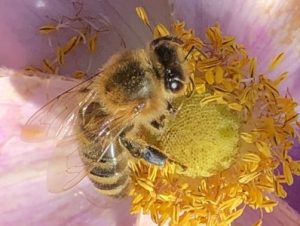
Mites and bees.
Varroa destructor also known as the Varroa mite is a small, external parasite of the honey bee : Apis mellifera. It is a mite. Mites are small members of the arachnids (8 legged arthropods). The mite(s) attaches to the body of the bee and feeds upon its fat bodies; this weakens the bee. The mite also feeds on bee larvae. Not only that but the mite can act as a vector (‘distributor’) for five different viruses that also weaken the bees. The varroa mite originally was to be found in Asia, and was parasitic on the Asian honeybee, Apis cerana. Sadly, it has now spread to many countries and is responsible for significant infestations of European honeybee hives. Over time, the mites have become increasingly resistant to chemical treatments.
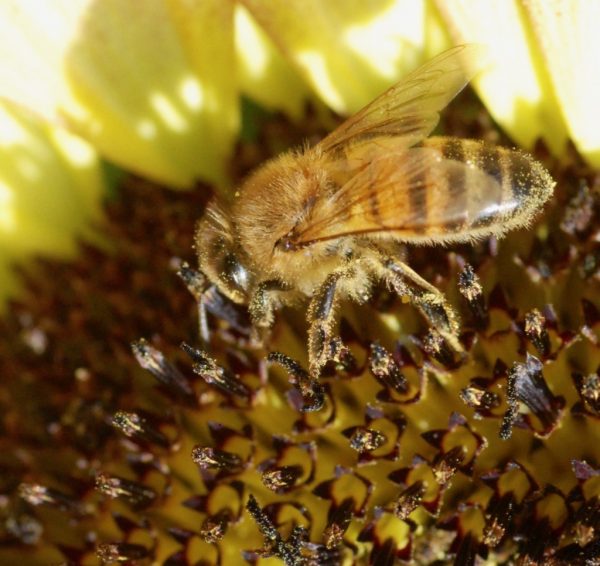 Now a program / study by the Universities of Exeter and Louisiana has been selectively breeding bees that identify and remove mites from their colonies [ie. showing hygienic behaviours]. They do this by removing infected larvae from the colony. This is sometimes referred to as varroa sensitive hygiene. Such colonies showed significant reduction in mite numbers and were more than twice as likely to survive winter as compared the ‘standard’ honey bees. The colonies also had reduced levels of three honey bee viruses The study looked at bee colonies across three American states, including California. In the States, beekeepers move thousands of bee colonies to provide pollination services for many different fruit crops (e.g. almonds) in the Spring, thus winter survival of the colonies is vital.
Now a program / study by the Universities of Exeter and Louisiana has been selectively breeding bees that identify and remove mites from their colonies [ie. showing hygienic behaviours]. They do this by removing infected larvae from the colony. This is sometimes referred to as varroa sensitive hygiene. Such colonies showed significant reduction in mite numbers and were more than twice as likely to survive winter as compared the ‘standard’ honey bees. The colonies also had reduced levels of three honey bee viruses The study looked at bee colonies across three American states, including California. In the States, beekeepers move thousands of bee colonies to provide pollination services for many different fruit crops (e.g. almonds) in the Spring, thus winter survival of the colonies is vital.
Historic rainfall records.
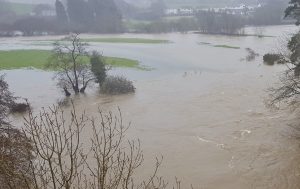 was launched in March 2020 (during the 'first stay at home' / lockdown). Members of the public were asked to help record digitally the information on pre-1960 weather sheets. The Met Office archives had some 65000 sheets that contained the ‘scribbled records’ of thousands of weather stations/ weather recorders across the country. Many of these sheets were the records of amateurs dating back decades, many before the foundation of the Met Office in 1854. One such 'recorder' was Lady Bayning of Norfolk, she was an early rainfall observer who took readings from 1835 to 1887. Deciphering the idiosyncratic handwriting could not be done by character recognition software. However, the volunteers rose to the challenge and the task was completed in some 16 days.
was launched in March 2020 (during the 'first stay at home' / lockdown). Members of the public were asked to help record digitally the information on pre-1960 weather sheets. The Met Office archives had some 65000 sheets that contained the ‘scribbled records’ of thousands of weather stations/ weather recorders across the country. Many of these sheets were the records of amateurs dating back decades, many before the foundation of the Met Office in 1854. One such 'recorder' was Lady Bayning of Norfolk, she was an early rainfall observer who took readings from 1835 to 1887. Deciphering the idiosyncratic handwriting could not be done by character recognition software. However, the volunteers rose to the challenge and the task was completed in some 16 days.
As a result, now the Met office has:
- Rainfall readings stretching back to 1836
- Data from an increased number of rain guages
- Identified the driest year on record - 1855
- Identified the driest month on record February 1932
- Identified the wettest month on record October 1903
Note : [The Met Office was founded by Robert Fitzroy, the captain of HMS Beagle, that carried Charles Darwin on his epic voyage around the globe. Fitzroy essentially established the science of weather forecasting]
Trees on the move ?
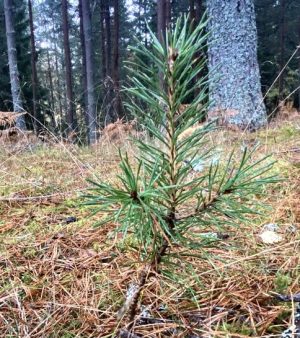 We know that trees can ‘move’. They did so at the end of the last Ice Age (some 12,000 years ago). As the glaciers retreated so trees started to return to the newly exposed soils as the temperature warmed. The discovery of the remains of acorns in archaeological digs, and analyses of fossil pollen records indicates that even oaks colonised areas of the UK at the rate of nearly a kilometre a year. Similarly, Norwegian Spruce colonised areas around the Baltic Sea and the boreal forests grew and expanded - long before humans arrived there.
We know that trees can ‘move’. They did so at the end of the last Ice Age (some 12,000 years ago). As the glaciers retreated so trees started to return to the newly exposed soils as the temperature warmed. The discovery of the remains of acorns in archaeological digs, and analyses of fossil pollen records indicates that even oaks colonised areas of the UK at the rate of nearly a kilometre a year. Similarly, Norwegian Spruce colonised areas around the Baltic Sea and the boreal forests grew and expanded - long before humans arrived there.
Now we have warming temperatures as we have moved into the Anthropocene. In order to survive changes conditions, plants, like us, have to move. So, like after the ice Age, plants and trees are on the move. Scientists in California have calculated that as a result of global temperature changes, plants need to move northwards (or upwards) at the rate of 400+ metres a year. In the eastern parts of the United States, it has been estimated that trees were shifted north and westward at a rate of 10 / 15 km per decade. The conifers going north. Whilst oaks and birches going west. In Scandinavia, which has experienced significant aspects of global warming, birch saplings are now found higher up mountains, gaining 500 metres in elevation within two decades. Pines, spruces and willows are also growing at higher altitudes than previously. Similar colonisations of hillsides and ‘bare valleys” are seen in Alaska of alder, willow and dwarf birch.
Further information here
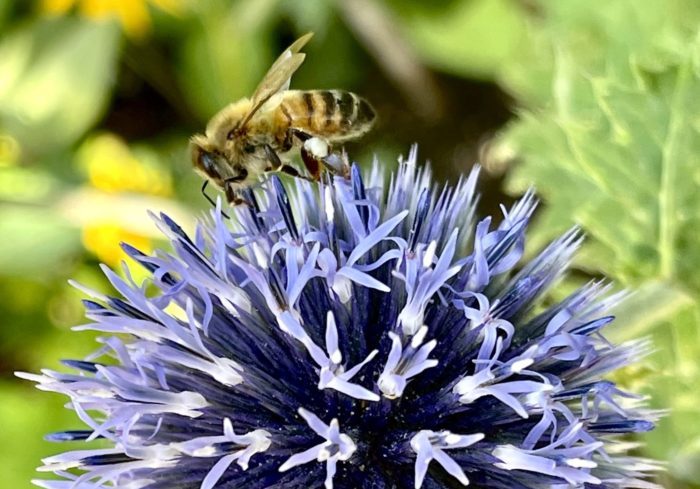
Busy bee
Comments are closed for this post.
